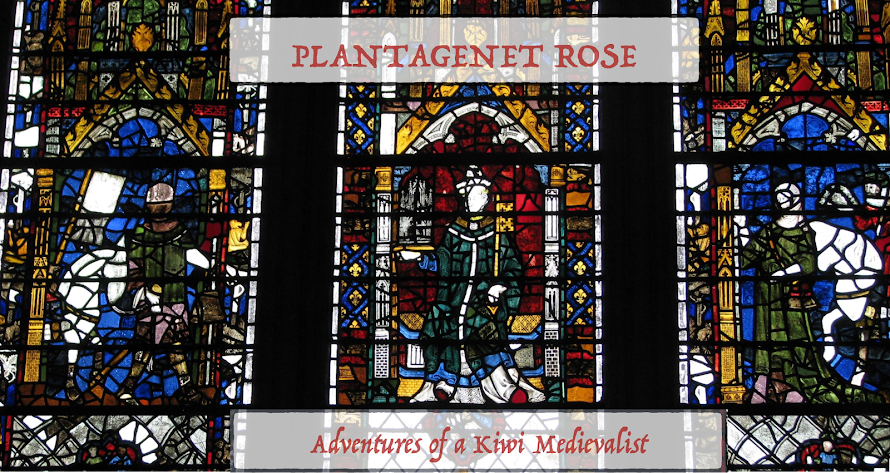Great wonder grew in hall
At his hue most strange to see,
For man and gear and all
At his hue most strange to see,
For man and gear and all
Were green as green could be.
Sir Gawain and the Green Knight (or SGGK as students of the poem abbreviate it) is one of my favourite poems. I love the force, rhythm and richness of the language, the vivid descriptions, and the characters - the mysterious, magical Green Knight and, well, who couldn't like Sir Gawain?
The poem is from the late fourteenth century, written in the dialect of the West Midlands. The author of the poem is, like many medieval authors, unknown. Whoever it was is usually identified as the 'Pearl Poet' because the poem Pearl is thought to have been written by the same person.
Because the poem contains long and quite detailed descriptions of the natural landscape, scholars have tried to map the poem onto the Midland countryside, trying to identify the exact locations described in the poem. This is a fairly hopeless undertaking and every scholar will have their own pet theory. Generally speaking, the poem is set somewhere in the Cheshire/Staffordshire/Derbyshire region, though Gawain's quest also takes him down into North Wales.
The poem is written in the alliterative style, which means that within each line there are at least three, sometimes more, words beginning with the same initial letter:
Ye may be seker bi this braunch that I bere here
That I passe as in pes, and no plycht seche.
Pearl manages to achieve the very difficult task of making the lines both alliterative and rhyming. Sir Gawain's rhyme scheme is much looser, almost to the point of being non-existant. This makes the verse flow much more freely. With alliteration and rhyme, the verse becomes quite stilted. Sir Gawain's verse flows more melodically and litingly than Pearl's.
The poem is divided into four 'fyttes' (usually modernised to 'fitt'), or parts. Within each fitt the verse is further broken up by bob-and-wheel structures. These bring each stanza to a conclusion - the bob-and-wheel is the poetical equivalent of tying the stanza up with a neat bow.
The bob-and-wheel is a set of five lines much shorter than the preceeding lines of the stanza. The bob is a very short line that seems to 'hang' off the rest of the stanza. The wheel is alliterative but also rhymes with the bob:
Such a fole upon folde, ne freke that hym rydes,
Was never sene in that sale wyth syght er that tyme, (last couplet of stanza)
with yye. (bob)
He loked as layt so lyght (wheel)
So sayed al that hym syye;
Hit semed as no mon mught
Under his dynttes dryye.
As far as readability goes, the Middle English of Sir Gawain is reasonably heavy going, although using a well-glossed edition makes it much easier (I have an old 1970 Everyman edition). But there are several translations of the poem available - two of the best are Marie Borroff's and Simon Armitage's. I used the Norton Critical edition of Marie Borroff's version when I was working on the poem last year.
Simon Armitage has also done a very good documentary on the poem:
There is a further host of info on the poem over at the Luminarium website: http://www.luminarium.org/medlit/gawain.htm
And the story of the poem? That is something you will have to find out for yourselves!
Opening quote from Marie Borroff, ed. and trans., Sir Gawain and the Green Knight (New York, London: W.W. Norton, 2010), l.147-50.
Middle English quotes from Pearl, Sir Gawain and the Green Knight, edited by A.C. Cawley (London: Everyman, 1970).

No comments:
Post a Comment